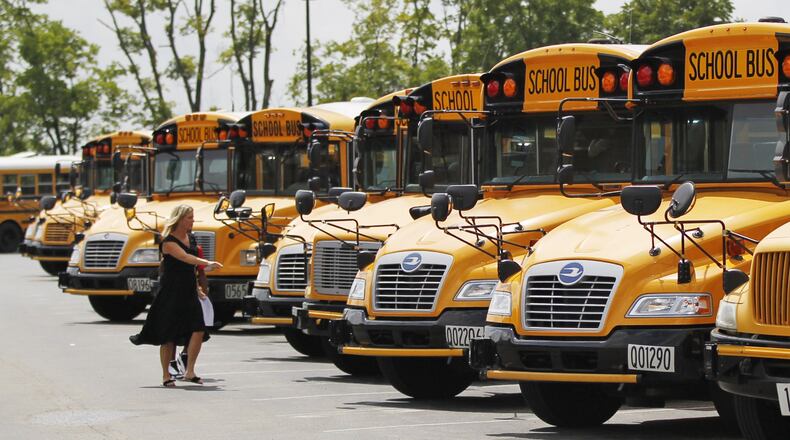The Centers for Disease Control guidance for busing calls for schools to create distance between children “when possible” by seating one child per row, and/or skipping rows.
But most local school districts are not going that far, and have adopted similar guidelines for students who ride the bus — masks are required, seats are assigned, no more than two students can sit on any one seat, and buses will be sanitized regularly.
Northmont and Fairborn are among the districts adding a “loading order” guideline to buses, where the first students to board the bus go all the way to the back, the next students go to the second-last seat, and so on. When students exit the bus,the very front row leaves first, then the second. The idea is that students won’t be walking past each other and breathing on others as much.
The Troy school district is going one step further, asking families not to ride the bus at all if they can avoid it.
“Social distancing is a real challenge on school buses,” Troy Superintendent Chris Piper said. “We’re going to ask parents, if they have the ability, to transport their child to school. For those that can’t do it … and would typically ride a bus, we’ll still provide that service.”
Springboro schools are also asking residents to consider “family carpooling” where possible.
Schools going with a hybrid model, where only half of the student body attends each day, may have the ability to space children out better on buses.
Tipp City’s plan includes a two-student-per-seat limit, but says if health concerns cause the district to switch to a hybrid system, the limit would be one student per seat.
Schools are taking a variety of other steps to streamline busing issues. Huber Heights’ restart plan says once in-person school resumes, buses will leave all windows open, weather permitting, to allow for better air circulation. Several districts are adding hand sanitizer dispensers to their buses. Mad River schools will only route students to their address of residence, not other stops.
Northmont’s plan says bus drivers must submit “daily sanitation logs” to the district’s transportation supervisor after completing the last route each day. Centerville says buses will be disinfected “before and after each trip.” And Springboro schools say student busing rules will be taken seriously.
“Students can be denied transportation if not wearing face coverings while riding the bus,” Springboro’s plan says. “This will not excuse the student from school attendance.”
About the Author

